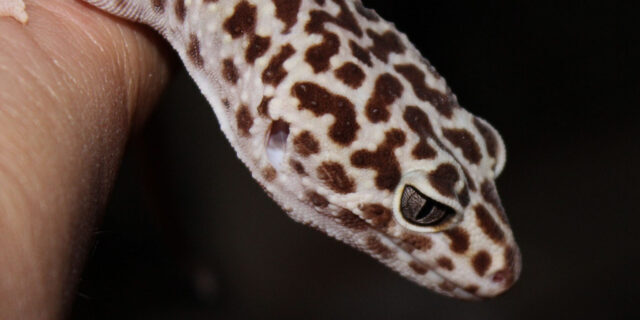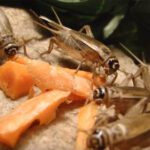Mealworms are a staple food for leopard geckos, offering essential nutrients vital for their growth and development. Both experienced reptile keepers and veterinary experts agree that understanding proper mealworm feeding techniques is fundamental to maintaining a healthy gecko.
This guide will provide you with comprehensive knowledge on incorporating mealworms into your gecko’s diet effectively and safely, covering everything from nutritional value to feeding schedules, preparation techniques, and troubleshooting common feeding challenges.
Table of Contents
Nutritional Value of Mealworms for Leopard Geckos
Mealworms possess a balanced nutritional profile, making them an excellent food choice for leopard geckos. Here’s a breakdown of their nutritional content:
- Protein: 20-25%
- Fat: 12-15%
- Fiber: 5-7%
- Moisture: 57-62%
According to Dr. Sarah Mitchell, DVM, a leading reptile veterinarian, “Mealworms provide essential proteins and fats that support muscle development and energy needs in leopard geckos. However, they should be part of a varied diet rather than the sole food source.” This highlights the importance of balance, as a diet consisting solely of mealworms may not fulfill all of a gecko’s nutritional needs.
Selecting the Right Mealworms for Different Gecko Stages
Size Matters
Choosing the right mealworm size based on your gecko’s age is crucial. Feeding too large a mealworm to a young gecko could result in digestive issues or choking hazards:
- Baby Geckos (0-4 months): Small mealworms (½ inch)
- Juvenile Geckos (4-12 months): Medium mealworms (¾ inch)
- Adult Geckos (12+ months): Large mealworms (1 inch)
Quality Indicators
To ensure you are feeding your gecko high-quality mealworms, look for these indicators:
- Active movement, as it shows the worms are healthy
- A clean, fresh appearance with a light brown color
- A firm texture indicating they are neither too old nor dried out
Feeding Schedule and Portions for Leopard Geckos
Establishing a consistent feeding schedule can improve your gecko’s overall health and digestion. Here’s a guide based on their life stages:
Baby Geckos (0-4 months)
- Frequency: Daily
- Portion: 5-7 small mealworms
- Timing: Early evening when they are most active
Juvenile Geckos (4-12 months)
- Frequency: Every other day
- Portion: 6-8 medium mealworms
- Timing: During active hours, typically in the evening
Adult Geckos (12+ months)
- Frequency: 2-3 times per week
- Portion: 8-10 large mealworms
- Timing: Evening hours
Keeping the portions within these recommendations helps avoid overfeeding, which can lead to obesity and other health problems.
Preparing Mealworms for Safe and Nutritious Feeding
Gut Loading Mealworms
Gut loading involves feeding mealworms nutrient-rich foods 24-48 hours before offering them to your gecko. This process enhances the nutritional value of the worms. Consider the following options for gut loading:
- Use nutrient-dense vegetables, such as carrots or leafy greens
- Commercial gut-loading products designed for feeder insects
- High-calcium foods to support the gecko’s bone health
Dusting Mealworms
Dusting mealworms with supplements is necessary to ensure your gecko receives sufficient calcium and vitamins. The recommended dusting schedule includes:
- Calcium powder: 2-3 times per week
- Multivitamin powder: Once weekly
A light, even coating of the supplement is ideal. Avoid over-dusting, which can deter the gecko from eating the mealworm.
Feeding Techniques for Leopard Geckos
There are two primary feeding methods for leopard geckos:
1. Bowl Feeding
Using an escape-proof dish with shallow sides and a non-tip design ensures that mealworms stay in place. This method is convenient and prevents substrate ingestion, which can lead to impaction.
2. Tong Feeding
Tong feeding helps build trust with your gecko, allowing you to control portions and prevent substrate ingestion. Gently hold the mealworm with feeding tongs, offering it directly to the gecko to encourage a natural hunting response.
Common Feeding Challenges and Solutions
Leopard geckos may sometimes refuse food or exhibit signs of overfeeding. Here are some common challenges and how to address them:
Refusing Food
Common causes of food refusal include stress, illness, improper habitat temperature, or being in a shedding phase. If your gecko consistently refuses food:
- Check habitat conditions to ensure they meet temperature and humidity requirements
- Monitor behavior for signs of illness
- Consult a veterinarian if the issue persists, as prolonged refusal can indicate health problems
Overfeeding Risks
Signs of overfeeding include obesity, lethargy, and decreased activity. To prevent overfeeding:
- Adhere to recommended portion sizes
- Monitor the gecko’s weight and adjust feeding frequency as necessary
- Stick to a consistent feeding schedule, especially as the gecko ages and becomes less active
Storing and Maintaining Mealworm Colonies
If you choose to keep a mealworm colony for a consistent food supply, proper storage is essential to ensure they remain healthy and nutritious:
- Temperature: Maintain a cool environment, ideally between 55-70°F
- Container: Use a ventilated container to avoid mold and moisture buildup
- Substrate: Wheat bran or oatmeal works well for bedding
- Cleaning: Regularly clean out the container to remove dead mealworms
- Hydration: Provide moisture by adding fresh vegetable pieces
Mealworm colonies can be a cost-effective way to keep a steady supply of feeders, provided they are well-maintained.
Monitoring Gecko Health and Feeding Success
Keeping track of your gecko’s behavior and physical health is crucial in assessing the success of their diet. Signs of a healthy, well-fed gecko include:
- Active hunting behavior during feeding times
- Consistent, regular defecation
- Steady weight gain and alert demeanor
Warning Signs: Loss of appetite, weight loss, lethargy, or abnormal droppings are red flags. If you notice any of these signs, consult a veterinarian for further guidance.
Alternative Food Sources for Variety in Diet
While mealworms are nutritious, offering a variety of feeder insects can prevent dietary monotony and provide additional nutrients. Consider these alternatives:
- Crickets: High in protein and a good staple
- Dubia Roaches: Nutrient-dense with balanced calcium-to-phosphorus ratios
- Phoenix Worms: High in calcium
- Silkworms: Excellent source of protein and low in fat
- Hornworms: Moisture-rich, great for hydration
Nutritional Comparison Table: Creating a table comparing the protein, fat, and calcium content of different feeders can help you decide which insects to include in your gecko’s diet.
Expert Tips and Best Practices
Professional reptile breeder Mark Thompson advises: “Always observe your gecko’s feeding response. Each gecko has individual preferences and needs, so adjust portions and frequency based on their activity level and body condition.”
Seasonal Considerations and Safety Tips
Seasonal Changes: During brumation or breeding seasons, your gecko’s feeding needs may change. Adjust portion sizes and feeding frequency based on their reduced or increased activity levels.
Safety Precautions:
- Remove uneaten mealworms from the dish within 24 hours
- Clean feeding dishes daily to prevent bacteria buildup
- Monitor for substrate ingestion, especially if using loose substrates like sand
- Regular health checks can catch issues before they become serious
Frequently Asked Questions
- Can mealworms bite my gecko? No, mealworms pose no threat to geckos.
- How long can mealworms survive in the feeding dish? Remove any uneaten mealworms after 24 hours.
- Should I feed dead mealworms? No, live mealworms stimulate natural hunting behavior.
- Can I breed my own mealworms? Yes, with the right setup, mealworm breeding is feasible.
Conclusion
Feeding mealworms to your leopard gecko can be a simple yet nutritious part of their diet when done right. Attention to detail, consistent preparation, and variety are keys to ensuring your gecko’s health and longevity. By following this guide and incorporating diverse feeders, you’ll provide your leopard gecko with optimal nutrition for a vibrant, active life.





